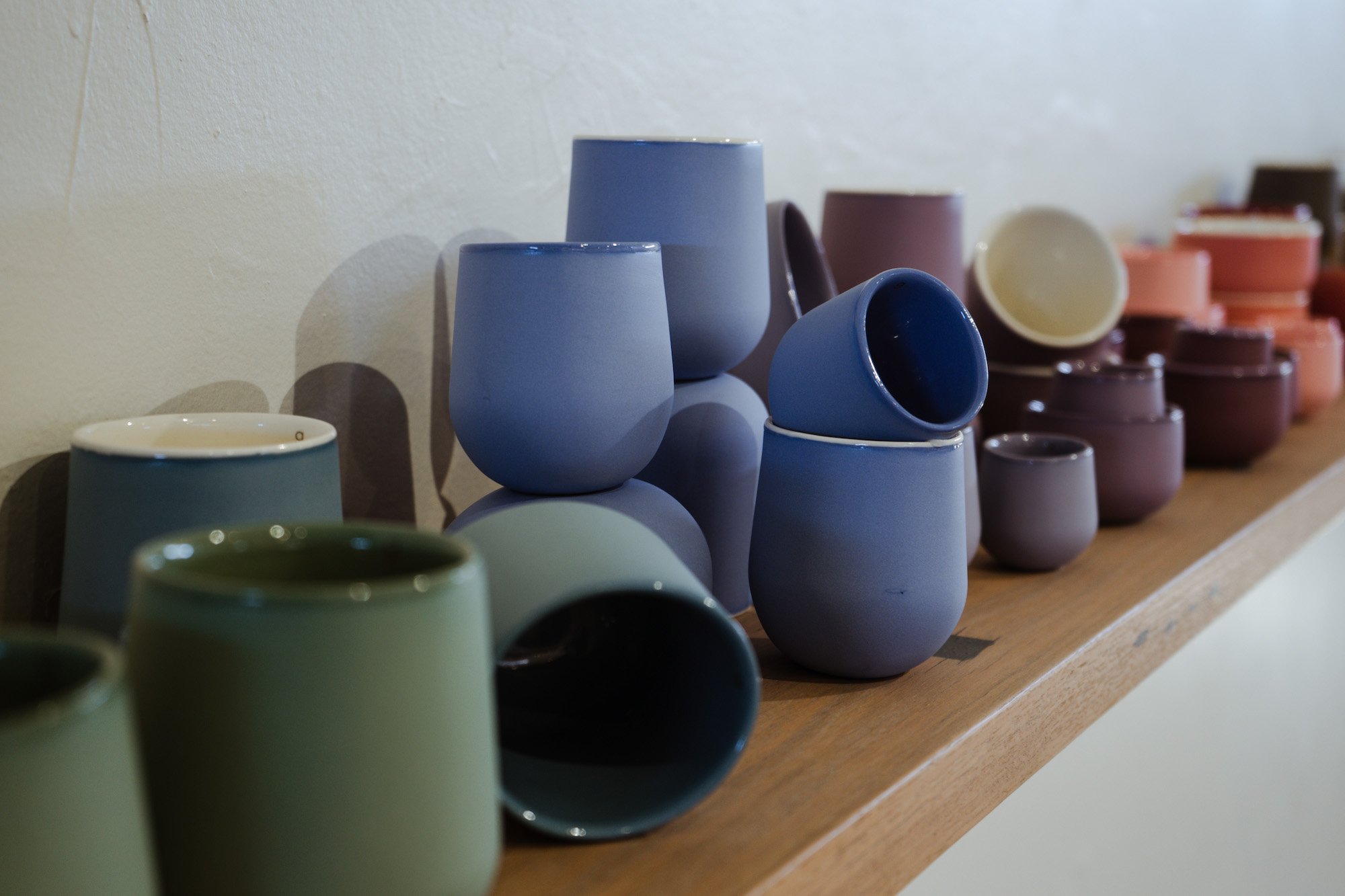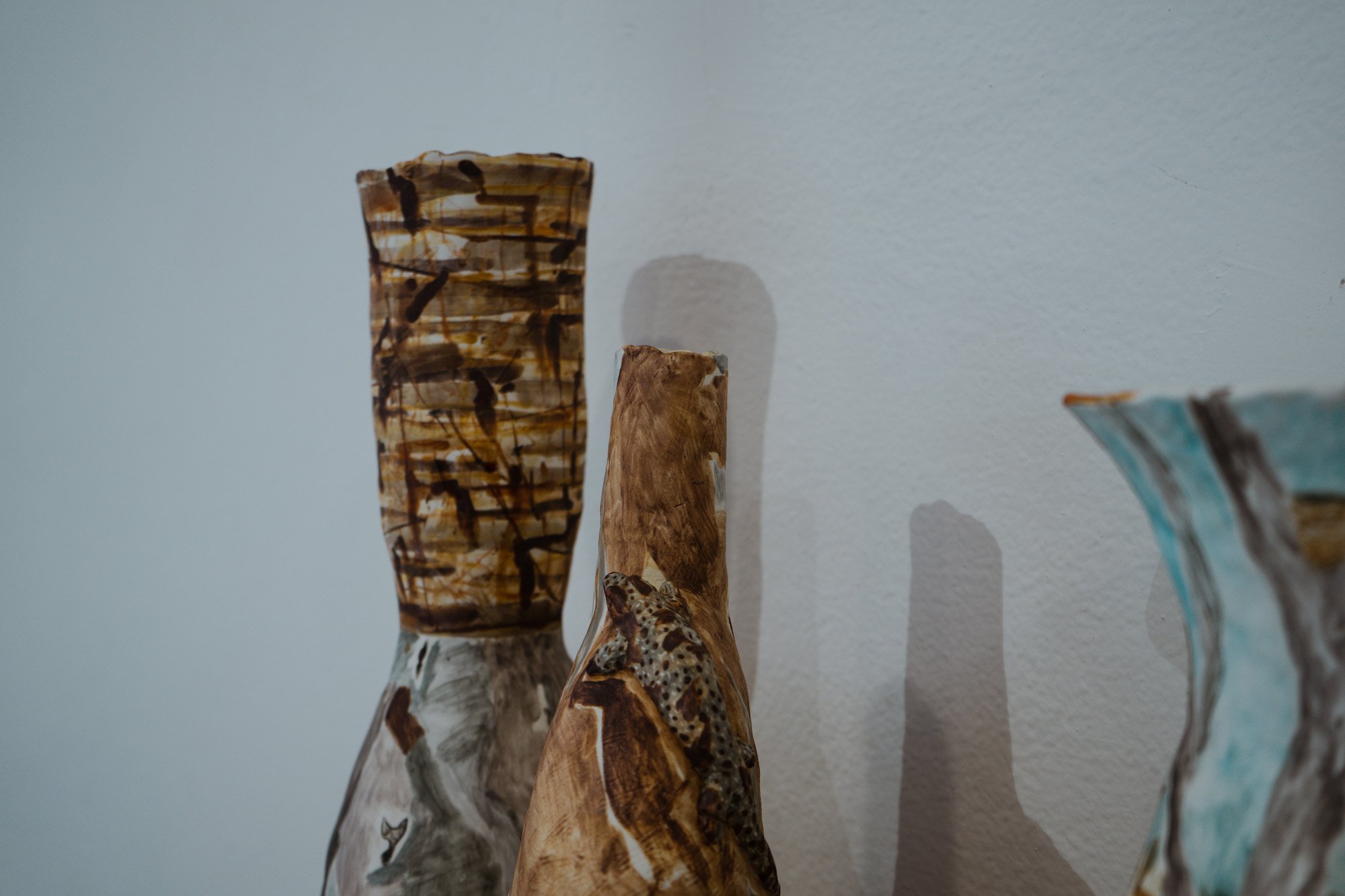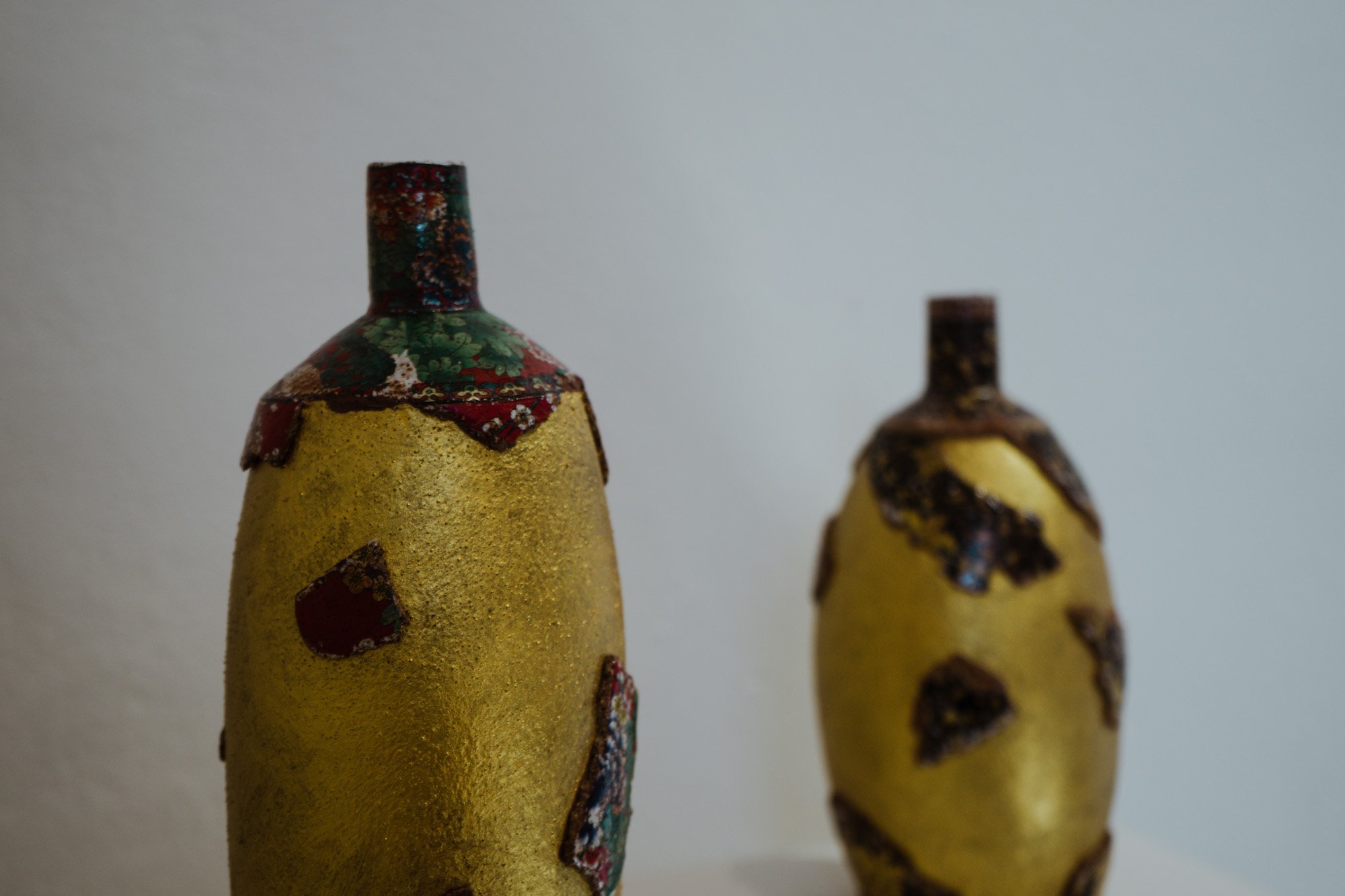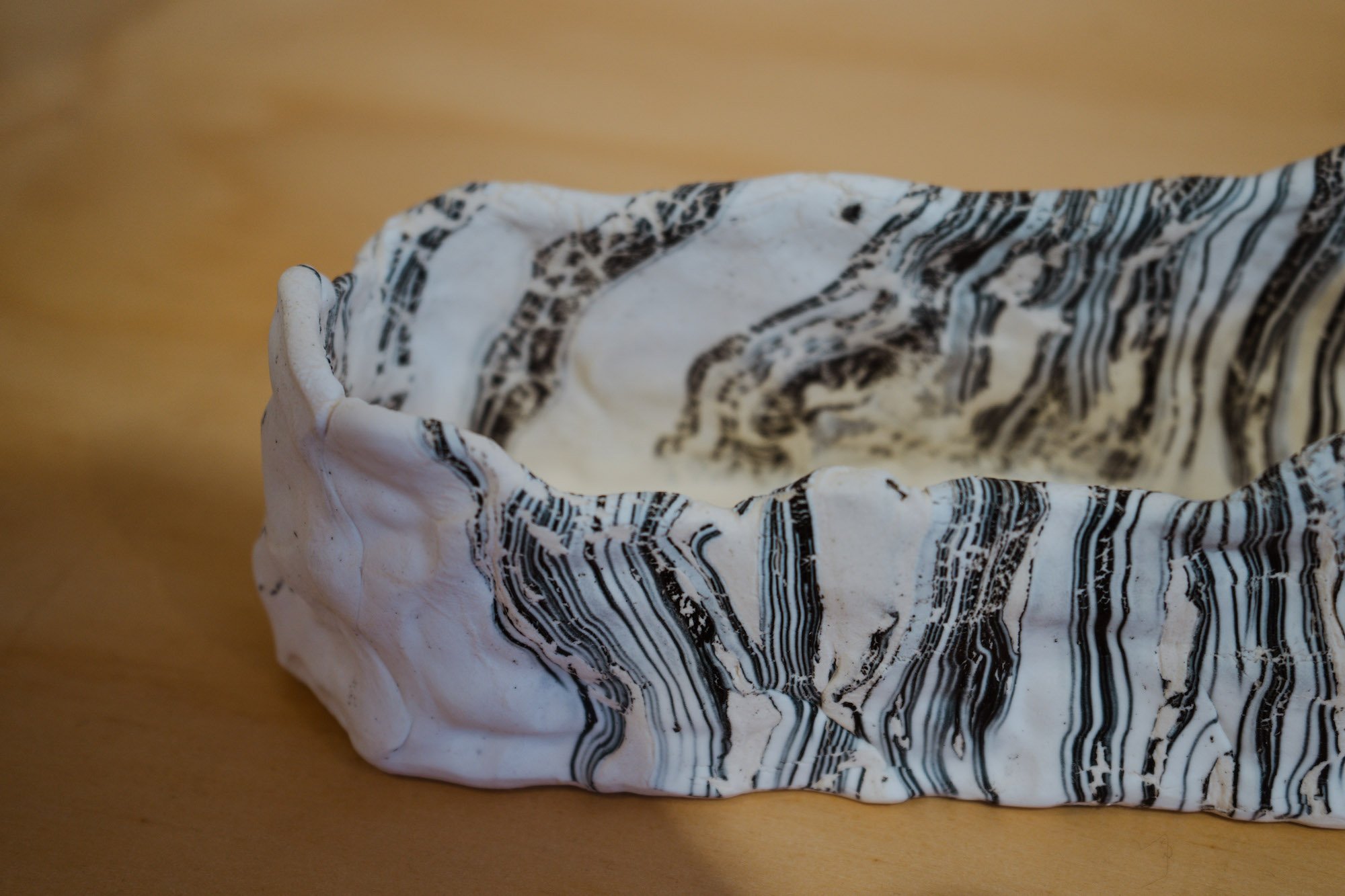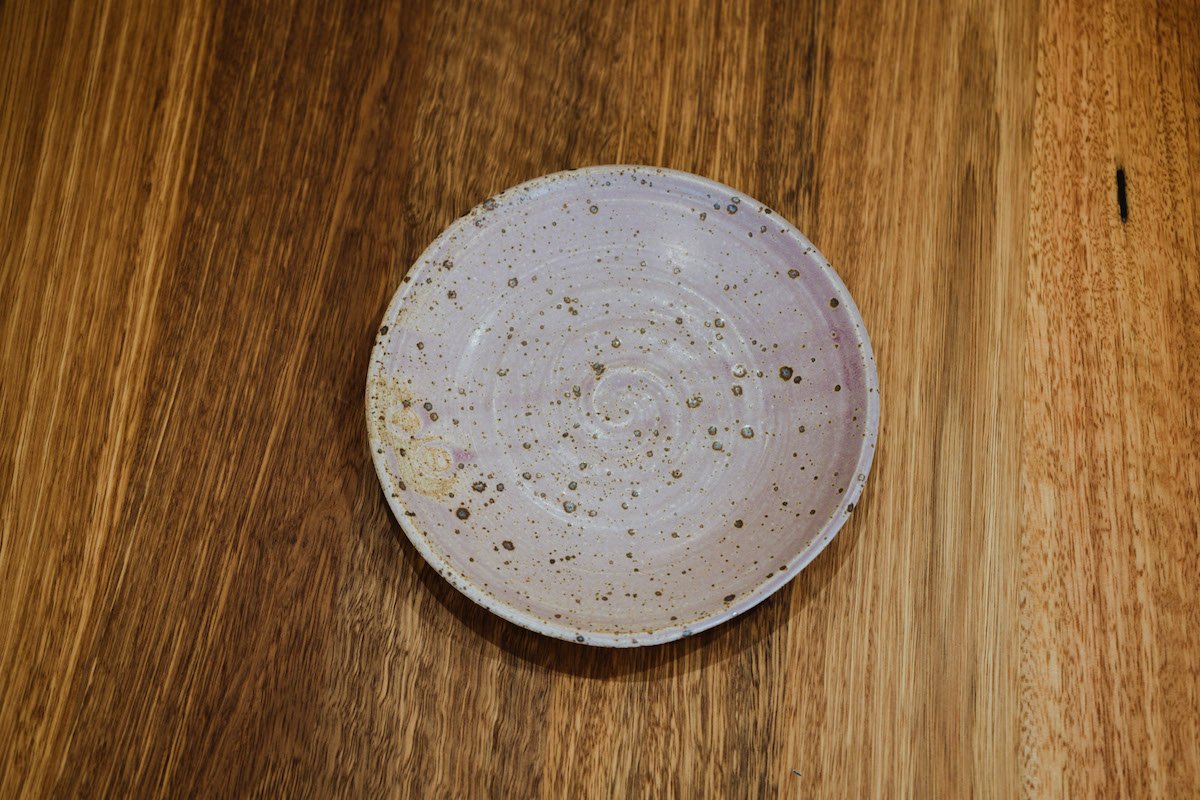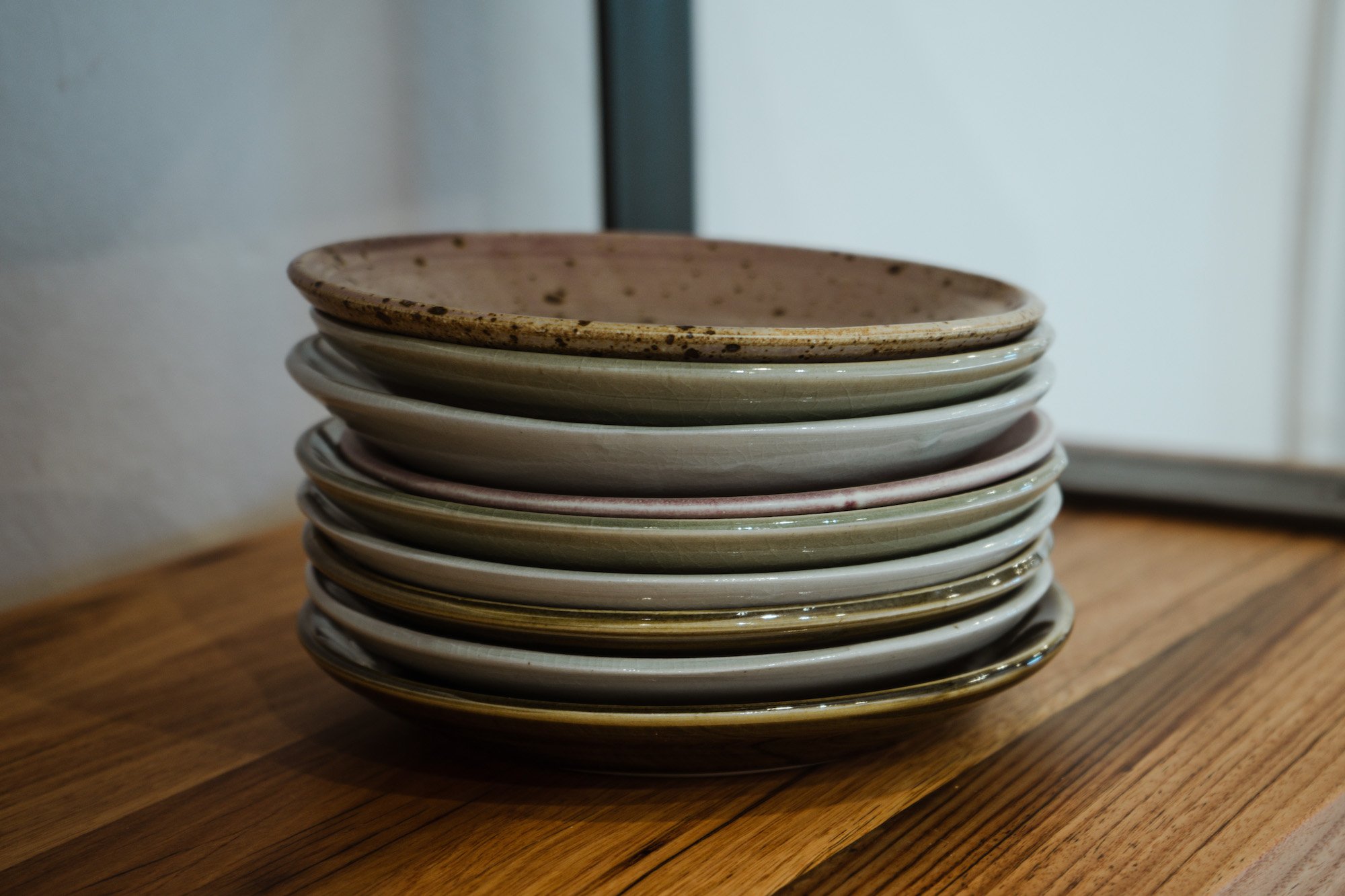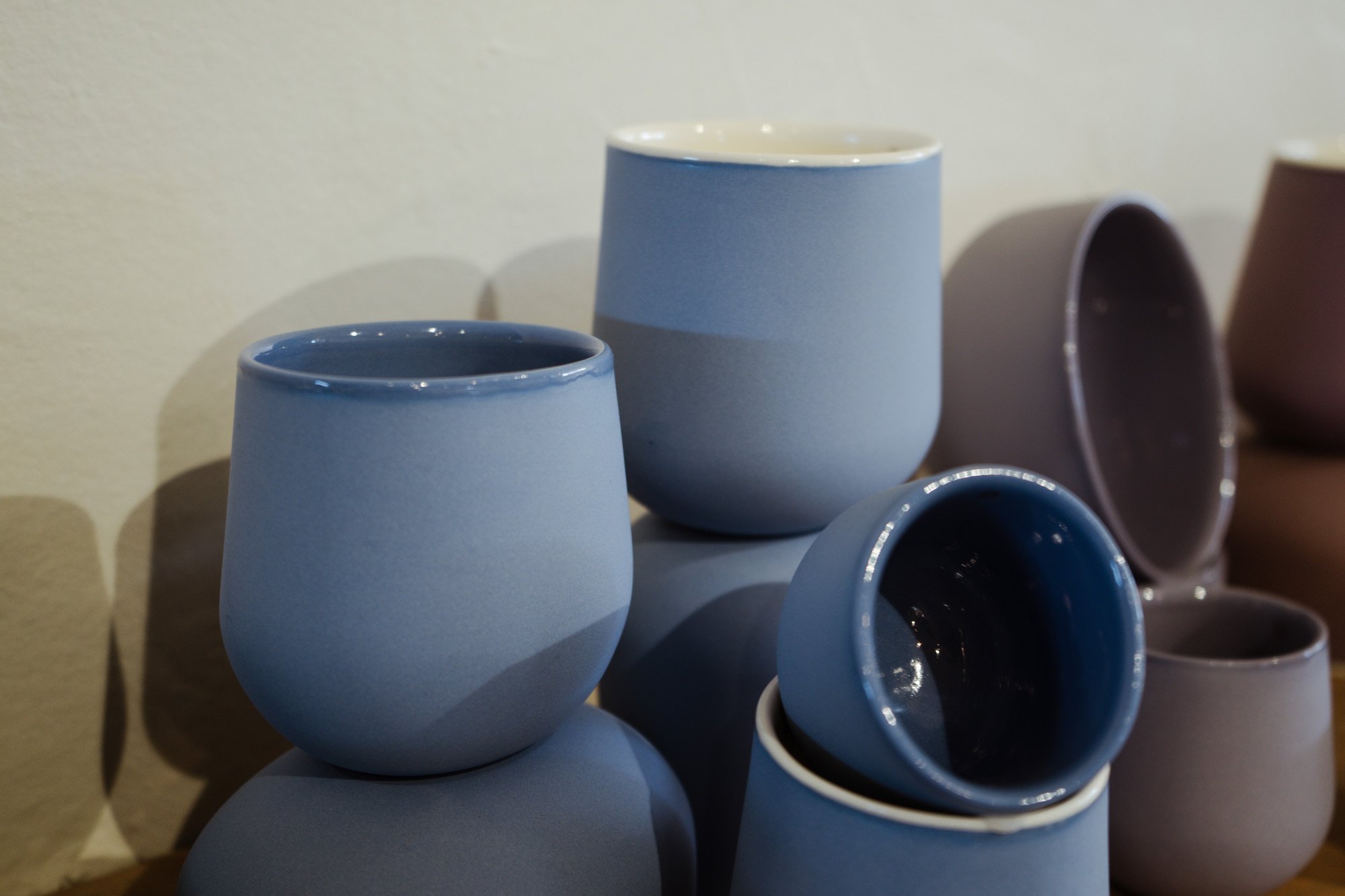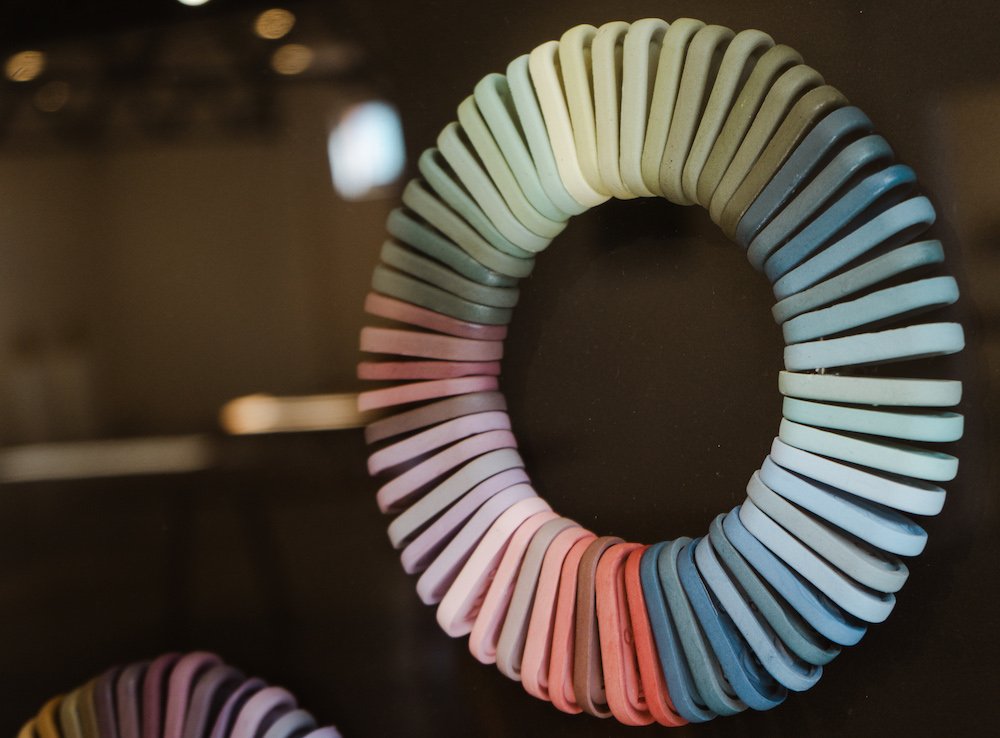Form and Function: Ceramics
April 21 - June 3, 2023
The Mixing Room Gallery
Thor’s Hammer presents Form and Function: Ceramics, an exhibition featuring works by five outstanding local and regional ceramicists, showing at The Mixing Room Gallery from April 21 until June 3, 2023.
Form and Function: Ceramics features works by Patsy Hely, Janet DeBoos, Joanne Searle, Anna Gianakis and Rebecca Dowling. United by a strong sense of form and functionality, the works in the exhibition are made for use, be it as colour tests for future pieces or wheel thrown plates for perfect meals. With over 150 years of experience between the exhibiting artists, the works on show demonstrate incredible knowledge of their craft, resulting in an exhibition of beautiful objects that encourage the viewer to consider relationships of colour, place, aesthetics, design, form and function.
Works for Sale
Many of the works in Form and Function: Ceramics are available to purchase. While they will remain on show for the duration of the exhibition, you can make a purchase throughout and we will notify you when they are ready to be picked up. We may also be able to assist you by shipping select items out to you. Note, this will not be possible for all items, so please check with us). Browse some examples of works below.
Photography: Ellie Keft
Form and Function: Ceramics
Here in the gallery it is the aesthetic qualities of these objects that first work upon us. They have been arranged carefully in curated groups or in sequences, disposed on shelves or tables or plinths. Their stillness allows us to appreciate a strong assertive silhouette, or the unexpected bloom of colour that a glaze lends to a surface.
But as you look at them, consider how little is required to make a clay form speak of function. It could be the way its walls gently swell outward that makes you think of it as a bowl or a cup; equally it could be the fold in the lip of a form that turns it into a jug, or a rudimentary sprig of clay on its outer wall that proposes a handle. These interpolations build bridges between the world of aesthetic contemplation and our everyday world. Once we perceive them as cup or bowl or jug we have an embodied memory of the small acts of cupping, or holding or pouring that form part of our everyday rituals.
But it is not until they are brought into our domestic spaces and we use them that we bring them to life. No longer static objects of contemplation, they are never still for long, as we move them from shelf or cupboard to kitchen bench, or dining table, or desk, allowing them to come briefly to rest in a never-ending series of temporary and ad hoc domestic tableaux. It is our use of them that now invests them with meaning, as they become woven into our life stories and eventually into the bigger material story of human lived experience.
Anne Brennan, 2023
Form and Function: Ceramics opening night remarks presented by Rod Bamford
When Waratah Lahy [Gallery Manager, Mixing Room Gallery] asked me to say something at the opening of this diverse and accomplished exhibition, I could not avoid digging into the title.
While at art school in the 1970’s, relationships between form and function were still framed by Modernist approaches, probably most well known through the axiom “form follows function “,a phrase coined by Louis Sullivan in his influential 1896 essay "The Tall Office Building Artistically Considered.” Essentially it means that the purpose of a building should be the starting point for its design.
Perhaps more than other artforms, Ceramics shares common touchpoints with architecture. Gallery collections aside, we have an instrumental as well as emotional relationship with ceramics in our homes, as part of the architecture. Doors and windows are opened and closed to provide comfort and shelter, just as cups and plates are filled with food and drink, passed around and shared to sustain us.
The term may have slipped rather unnoticed into the everyday language of the 21st C, but 100 years ago staking philosophical claims to the culture of emerging modernism was serious business. Modernism to me is the age of manifestos, cubism, dada, futurism, surrealism, art cover, the situationalists, dada, minimalism…and the like, where artists, designers and architects were less interested in issues of individual identity and associated politics that are commonplace today, but more concerned with finding a set of moral guides for navigating the upheaval of emerging industrialised economies and associated geopolitical conflicts in Europe and America.
The artist made work under a watchful cultural eye, and one could be accused of a felony for applying decoration to a form. “Ornamentation is crime” was derived from the title of Adolf Loos’ book outlining his extreme interpretation of Form Follows function, a type of treatise on industrial aesthetics that acted as a catalyst for mid century minimalism .
Whilst there is conjecture as to the nature of “purpose” in the interpretation of function, or whether form should marry, rather than ‘follow function’ the axiom became the touchstone for many architects and industrial designers and was propagated by Bauhaus under Walter Gropius, and in that context was a creative driver of mass production.
Form follows function is still influential today possibly because its philosophy appears to offer one angle of clarity in a world of complexity and competing ideas. But the context of functionality has certainly shifted, and I’d like to point out a few instances of how the works in this exhibition offer a fresh way of thinking about the contemporary dance between form and function.
There’s strong visual evidence of process functioning in these works, a use of material properties to develop a range of authentic aesthetic qualities, something that is often criticised as absent from industrial production. It’s here, in a different way in each artists work, not only in the qualities associated with a variety of skills used forming shapes and developing surface quality and imagery, but in the ideas and preparation of materials.
The beautiful colour palettes and translations in Anna Gianakis’s work reminds me of Wedgwood who searched the world for clays of particular colour and quality.
Janet de Boos' works suggest amongst other things, the functional imperatives and hybridity of globalised ceramic mass production, where ornament, rather than being a crime, is a marketplace cultural differentiator. Janet’s work sets up the opportunity for critique of these conditions rather than act as market research! There is a Tradition in ceramic tableware manufacture of surface patterns extending from variety - a function of economic and thrift.
Joanne Searle’s forms have a purpose to carry ideas as well as liquids, tacitly interpreting sound to offer an imaginary image of sonic wave travel, and the fluid movement of the marks echoes the rhythm of wheel throwing.
Rebecca Dowling’s plates hone in on the most subtle elements of function, the intimate relationship between user and utensil, at the same time connecting both with locality, through materials of making and perhaps a rural soul. The work has a distinct sense of ceramic terroir.
Patsy Hely’s delicately painted vessels and shards interrogate function in different ways, for me asking questions about how we experience ‘form’ as vessel or canvas, and interpret the relationship of image, object and memory, whether through painted visual interruption of a shapes, 3 dimensional boundaries or indeed its completeness.
Well I’ll finish up here, and in doing so I’d encourage you to open your mind to ideas and heart to the visceral beauty of this exhibition and its contemporary expression of form and function, an eternal ceramic dialogue ) and of course your wallets.
Rod Bamford is the Head of Ceramics at The Australian National University’s School of Art & Design
About the ArtistS
Patsy Hely
Patsy Hely is an artist working primarily in ceramics. She trained at the National Art School, Sydney, (1977-79) and worked as an academic at Southern Cross University (1989-2001) and the ANU School of Art and Design, Canberra (2002-2014). In 2007 she was awarded a PhD for her project Ceramics and the articulation of place. Much of her work is domestic in scale and form and is either slipcast or handbuilt in porcelain and features a variety of painted, sometimes printed, surfaces, using under and overglaze colour, pencils, crayons and decals with most pieces multiple fired. Her work is held in major collections including the Victoria & Albert Museum, London (small tapestry), Musée royal de Mariemont, Belgium, National Gallery of Australia, Powerhouse Museum, Sydney, Canberra Museum and Gallery, Canberra, ACT Legislative Assembly Art Collection, Parliament House Art Collection, the National Gallery of Victoria and more.
Janet DeBoos
Janet DeBoos is an Honorary Senior Lecturer (2019- present) and (Emeritus Fellow 2015-2018), Australian National University School of Art & Design. She was previously Head of Ceramics at ANU for over fifteen years (1998-2015), Head of Ceramics at her alma mater, East Sydney College of TAFE (now National Art School) 1979/80, and ran a production pottery (Brindabella Pottery) for almost twenty years in between.
Janet has conducted workshops/given demonstrations in colleges and universities, crafts councils and pottery groups in all states of Australia, New Zealand, mainland United States and Hawai’i, Canada, UK, China, Japan and Korea. She has written two best-selling books on glazes (Glazes for Australian Potters and More Glazes for Australian Potters), co-authored Handbook for Australian Potters, and has written numerous articles for Australian and International Ceramics journals on ceramic art practice, education and glaze technology. She has regularly exhibited in Australia and overseas (UK, Netherlands, Belgium, Greece, Spain, South Africa, Canada, United States, Korea and China) and has work in major permanent public collections in Australia, UK, USA, Canada, China, Taiwan, Belgium, and New Zealand.
Joanne Searle
Joanne Searle has worked as an artist and educator in the Canberra region since graduating from the ANU School of Art & DEsign in 1999 with a Bachelor of Visual Arts (Ceramics) with First Class Honours.
Joanne operates within a diverse practise that encompasses exhibitions, product design and production and education.
Her exhibition work has been shown widely, both within Australia and internationally. It explores the intersection of printmaking and ceramics, and the evocative qualities of mark-making on clay. Joanne’s research themes include how sound data can represent narratives of place.
Joanne is passionate about skill-sharing and the role of bringing creative practice to a broader audience. Joanne held a lecturing position in the ANU School of Art Ceramics workshop for 20 years. After leaving the tertiary sector, Joanne co-founded Clay Studio Canberra, a community-based teaching studio.
Anna Gianakis
With over twenty years of practice and research, Anna has refined her intimate knowledge of porcelain, colour formulation and form since she graduated from a Master of Philosophy (Ceramics) at ANU Art School in 2001.
Anna’s work has since been featured in many publications such as the Australian Financial Review, Journal of Australian Ceramics, Ceramics Art and Perception, and Ceramics Technical.
She has exhibited work across Australia, including a solo launch at Craft ACT, and has also been selected for group exhibitions in Japan, Germany, USA, and the UK.
Anna has received a number of awards, most recently The Colour Collective’s International Colour Day Award (2021), as well as grants from the Australia Council for the Arts and the National Association for the Visual Arts.
Spanning over two decades, Anna’s continuing career demonstrates an evolution of form and colour that promises to earn her a permanent place in Australian ceramics.
Rebecca Dowling
Rebecca Dowling‘s ceramic practice is centred on the intimate relationship between user and implement. For over 30 years Rebecca has worked on perfecting clay pieces which mould themselves to the human hand, heightening the experience of eating, drinking, and preparation.
A master of wheel throwing, her tactile work invites the user to vicariously enjoy the process of creation, with marks of the maker evident in each piece.
Thick glazes evoke the land she lives on in rural NSW, with dense shades redolent of eucalyptus bark and leaves, dusty soil, and clouded skies.
Rebecca studied her BA (Visual Arts) at Western Sydney University, followed by a Master of Arts in Ceramics at the Australian National University School of Art & Design.
Over the years Rebecca has investigated how ceramics are traditionally made in different cultures, through artist study trips to Thailand, Japan, Vietnam and India.
She has exhibited widely throughout Australia and produces commissions for individuals, galleries and restaurants.
Key Details
EXHIBITION DATES: April 21 - June 3, 2023
EXHIBITION OPENING: 6pm Friday 28 April. Book tickets.
WHERE: The Mixing Room Gallery at Thor’s Hammer, 10 Mildura St, Griffith, ACT.
GALLERY HOURS: Monday - Friday 8-5pm and Saturdays 9-1pm.
ENTRY DETAILS: No tickets or bookings required to view exhibition.
WORKS ON SALE: Works will be on sale in the lead up to the exhibition and throughout. Please contact us for sales enquiries on 6282 9900, or email hammer@thors.com.au
Please note: The Mixing Room Gallery is located up two flights of stairs. If you have mobility issues, we're very sorry but we are unable to cater for your needs. Our greatest apologies.
THE MIXING ROOM GALLERY COMMUNITY PARTNER
Thanks to Capital Brewing Co. for their ongoing support of our exhibition opening events at The Mixing Room Gallery. Capital is a B-Corp Certified, Canberra born and bred institution and Australia’s first Climate Active certified 100% carbon neutral brewery!
Here at The Mixing Room Gallery, we curate artists and exhibitions that align with the environmental ethos of Thor’s Hammer as a business. Having support from like-minded partners like Capital Brewing Co. is incredibly important to us, and to the integrity of the Mixing Room Gallery program.

